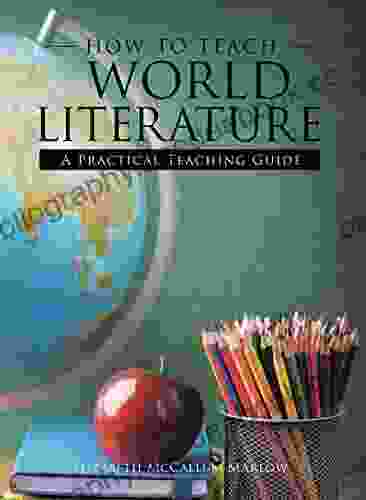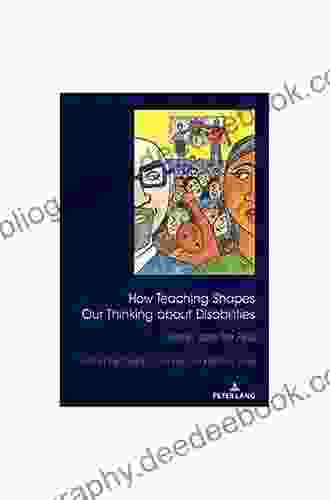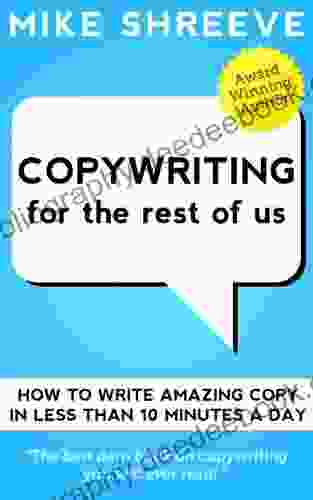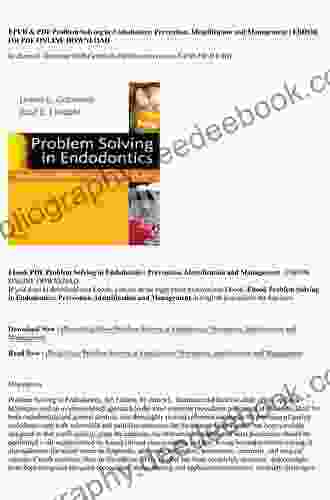How to Teach World Literature: A Comprehensive Guide for Educators

4.6 out of 5
| Language | : | English |
| File size | : | 16293 KB |
| Text-to-Speech | : | Enabled |
| Screen Reader | : | Supported |
| Enhanced typesetting | : | Enabled |
| Word Wise | : | Enabled |
| Print length | : | 397 pages |
World literature encompasses a vast and diverse array of literary works from cultures around the globe. From the ancient epics of Mesopotamia to the modern masterpieces of South America, world literature offers a unique window into the human experience. Teaching this subject in the classroom can be a rewarding and enriching experience for both students and educators alike.
However, teaching world literature effectively presents a unique set of challenges and opportunities. Educators must navigate cultural differences, linguistic barriers, and diverse literary styles. This comprehensive guide will provide educators with a wealth of strategies and resources to overcome these challenges and create a dynamic and engaging learning environment for their students.
Developing a Curriculum
The first step in teaching world literature is to develop a curriculum that aligns with the educational standards and goals of the school or district. This curriculum should include a balance of works from different cultures, time periods, and genres. It is also important to consider the diversity of students in the classroom and select texts that are accessible and relevant to them.
When selecting texts, educators should consider the following criteria:
- Literary merit: The text should be well-written and have literary value.
- Cultural significance: The text should reflect the culture and traditions of the people it represents.
- Accessibility: The text should be appropriate for the reading level and interests of the students.
- Diversity: The text should represent a variety of cultures, perspectives, and experiences.
Lesson Planning
Once the curriculum has been developed, educators can begin to plan lessons that are both engaging and informative. Each lesson should have a clear objective, engaging activities, and opportunities for students to interact with the text. The following are some effective lesson planning strategies:
- Use a variety of instructional strategies: Lectures, discussions, group work, projects, and creative activities can all be used to teach world literature.
- Incorporate multimedia: Use films, music, and art to bring the cultures and traditions of the works to life.
- Provide background information: Students need to understand the historical and cultural context of the works they are reading.
- Encourage critical thinking: Ask students to analyze the texts, make connections, and form their own interpretations.
- Foster collaboration: Group work and peer review can help students learn from and engage with each other.
Instructional Strategies
There are a wide range of instructional strategies that can be used to teach world literature. Some of the most effective strategies include:
- Inquiry-based learning: Encourage students to ask questions, conduct research, and draw their own s about the texts.
- Cultural immersion: Create opportunities for students to experience the cultures of the works they are reading through field trips, guest speakers, and cultural performances.
- Comparative literature: Compare and contrast works from different cultures to identify similarities and differences.
- Literary analysis: Teach students to analyze the elements of fiction and non-fiction, including plot, character, setting, theme, and style.
- Creative writing: Encourage students to write their own creative responses to the texts.
Assessment Techniques
Assessment is an essential part of the teaching and learning process. It provides educators with feedback on student learning and allows them to make adjustments to their instruction. The following are some effective assessment techniques for world literature:
- Formative assessment: Informal assessments, such as quizzes and class discussions, can be used to monitor student progress and provide feedback throughout the learning process.
- Summative assessment: Final exams, research papers, and presentations can be used to assess student learning at the end of a unit or course.
- Portfolio assessment: A portfolio of student work can showcase their learning over time and demonstrate their progress in different areas.
- Self-assessment: Encourage students to reflect on their own learning and identify areas for improvement.
Teaching world literature can be a challenging but rewarding experience. By developing a well-rounded curriculum, planning engaging lessons, and using effective instructional strategies and assessment techniques, educators can create a dynamic and enriching learning environment for their students. Through the study of world literature, students can gain a deeper understanding of the human experience, develop critical thinking skills, and appreciate the diversity of cultures around the globe.
Resources
- The National Council of Teachers of English (NCTE): https://www.ncte.org/
- The International Baccalaureate (IB): https://www.ibo.org/
- The Modern Language Association (MLA): https://www.mla.org/
Image Credit: Smithsonian Magazine
4.6 out of 5
| Language | : | English |
| File size | : | 16293 KB |
| Text-to-Speech | : | Enabled |
| Screen Reader | : | Supported |
| Enhanced typesetting | : | Enabled |
| Word Wise | : | Enabled |
| Print length | : | 397 pages |
Do you want to contribute by writing guest posts on this blog?
Please contact us and send us a resume of previous articles that you have written.
 Book
Book Page
Page Chapter
Chapter Text
Text Story
Story Library
Library E-book
E-book Magazine
Magazine Newspaper
Newspaper Paragraph
Paragraph Bookmark
Bookmark Glossary
Glossary Bibliography
Bibliography Preface
Preface Synopsis
Synopsis Tome
Tome Bestseller
Bestseller Classics
Classics Narrative
Narrative Autobiography
Autobiography Memoir
Memoir Reference
Reference Character
Character Librarian
Librarian Catalog
Catalog Borrowing
Borrowing Stacks
Stacks Periodicals
Periodicals Study
Study Research
Research Scholarly
Scholarly Lending
Lending Journals
Journals Special Collections
Special Collections Literacy
Literacy Study Group
Study Group Reading List
Reading List Book Club
Book Club Theory
Theory Textbooks
Textbooks Roy Pond
Roy Pond Luanne C Brown
Luanne C Brown Tony Konieczny
Tony Konieczny Robert Chandler
Robert Chandler Sudipta Kaviraj
Sudipta Kaviraj Marguerite Henry
Marguerite Henry Christophe Levaux
Christophe Levaux F A Hayek
F A Hayek Regpub
Regpub Little John
Little John Kent Nguyen
Kent Nguyen Patricia F Carini
Patricia F Carini J A Campbell
J A Campbell Kym Wilson
Kym Wilson Blake Shelton
Blake Shelton Devonne Atwood
Devonne Atwood Vincent E Henry
Vincent E Henry Scott Jasper
Scott Jasper Ward Jenkins
Ward Jenkins Deborah Cluff
Deborah Cluff
Light bulbAdvertise smarter! Our strategic ad space ensures maximum exposure. Reserve your spot today!
 Braeden HayesFollow ·5.6k
Braeden HayesFollow ·5.6k William PowellFollow ·8.8k
William PowellFollow ·8.8k Roberto BolañoFollow ·19.3k
Roberto BolañoFollow ·19.3k Xavier BellFollow ·6.9k
Xavier BellFollow ·6.9k Deacon BellFollow ·18.8k
Deacon BellFollow ·18.8k Ruben CoxFollow ·12.8k
Ruben CoxFollow ·12.8k Damon HayesFollow ·11.9k
Damon HayesFollow ·11.9k Chuck MitchellFollow ·12.4k
Chuck MitchellFollow ·12.4k
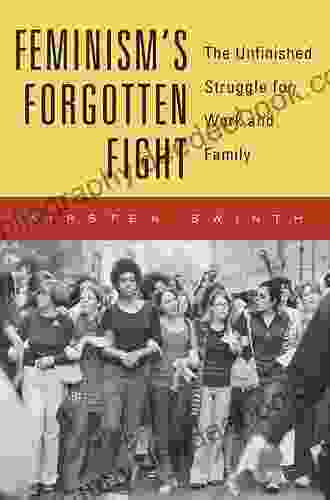
 Braden Ward
Braden WardFeminism's Forgotten Fight: The Ongoing Battle for...
The feminist movement has historically...
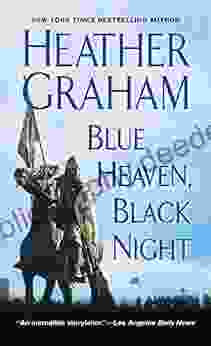
 Julio Cortázar
Julio CortázarBlue Heaven Black Night: A Literary Journey Through Love,...
In the realm of...

 Eddie Bell
Eddie BellA Journey Through Time: Exploring the Enchanting World of...
The vibrant tapestry of New...

 Lawrence Bell
Lawrence BellValiance Dragon Soul Press Anthology: A Literary Odyssey...
Step into a realm where...

 Aron Cox
Aron CoxEmbark on a Creative Odyssey with Jean Leinhauser's "101...
Unveil a Kaleidoscope of...
4.6 out of 5
| Language | : | English |
| File size | : | 16293 KB |
| Text-to-Speech | : | Enabled |
| Screen Reader | : | Supported |
| Enhanced typesetting | : | Enabled |
| Word Wise | : | Enabled |
| Print length | : | 397 pages |


